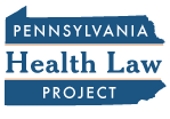Fitch: Medicaid Block Grants, MFAR Threaten States, Providers
Medicaid block grants and the proposed Medicaid fiscal accountability regulation (MFAR) pose new financial threats to providers and states, according to Fitch Ratings, the financial rating company.
MFAR poses the greater threat, Fitch believes, noting in a new analysis that it could
…reduce total Medicaid spending nationally by $37 billion and $44 billion annually…and by $23 billion to $30 billion for hospitals alone. States, and to some extent providers, would respond to MFAR’s implementation with measures to mitigate the negative fiscal implications.
 Block grants, through what has been named the Healthy Adult Opportunity program, also pose a threat, with Fitch explaining that
Block grants, through what has been named the Healthy Adult Opportunity program, also pose a threat, with Fitch explaining that
Capping federal Medicaid contributions, even for a subset of beneficiaries, poses risks to state budgets and those entities reliant on state funding, including local governments and providers. States would need to find revenue or cost savings, either in Medicaid or elsewhere, to offset reduced federal contributions.
Because Pennsylvania safety-net hospitals care for more Medicaid patients than the typical hospital, both proposed policy changes have a potentially greater impact on them.
Last month SNAP conveyed its opposition to the proposed MFAR regulation in a formal comment letter to the Centers for Medicare & Medicaid Services in response to the regulation’s publication late last year. Pennsylvania Governor Tom Wolf has already rejected the idea of using block grants in the state’s Medicaid program.
Learn more about the potential impact of the proposed Medicaid fiscal accountability regulation and Medicaid block grants in the Fitch Ratings analysis “Fitch Rtgs: Medicaid Changes Will Affect States, NFP Healthcare Providers.”
 As described in The Impact, DHS’s weekly newsletter:
As described in The Impact, DHS’s weekly newsletter: In her commentary Verma rebuts these criticisms, maintaining that the proposed regulation seeks to ensure that states pay their fair share of their Medicaid partnership with the federal government, raise that share in a manner consistent with federal guidelines, and spend it in ways that fall within regulatory standards. She also maintains that the regulation will foster greater transparency and accountability for the Medicaid program.
In her commentary Verma rebuts these criticisms, maintaining that the proposed regulation seeks to ensure that states pay their fair share of their Medicaid partnership with the federal government, raise that share in a manner consistent with federal guidelines, and spend it in ways that fall within regulatory standards. She also maintains that the regulation will foster greater transparency and accountability for the Medicaid program. Under federal law, CMS must publish a notice declaring its intention to collect such data and seek input from stakeholders. For this particular notice, stakeholders have until March 9 to respond.
Under federal law, CMS must publish a notice declaring its intention to collect such data and seek input from stakeholders. For this particular notice, stakeholders have until March 9 to respond. Among the groups submitting formal comment letters to the Centers for Medicare & Medicaid Services in response to the proposed Medicaid fiscal accountability regulation was the Safety-Net Association of Pennsylvania. See SNAP’s letter
Among the groups submitting formal comment letters to the Centers for Medicare & Medicaid Services in response to the proposed Medicaid fiscal accountability regulation was the Safety-Net Association of Pennsylvania. See SNAP’s letter  The proposed budget, presented to the state legislature earlier this week, includes the following new initiatives:
The proposed budget, presented to the state legislature earlier this week, includes the following new initiatives: Included in this month’s edition are articles about:
Included in this month’s edition are articles about: In a news release, Governor Wolf said that
In a news release, Governor Wolf said that